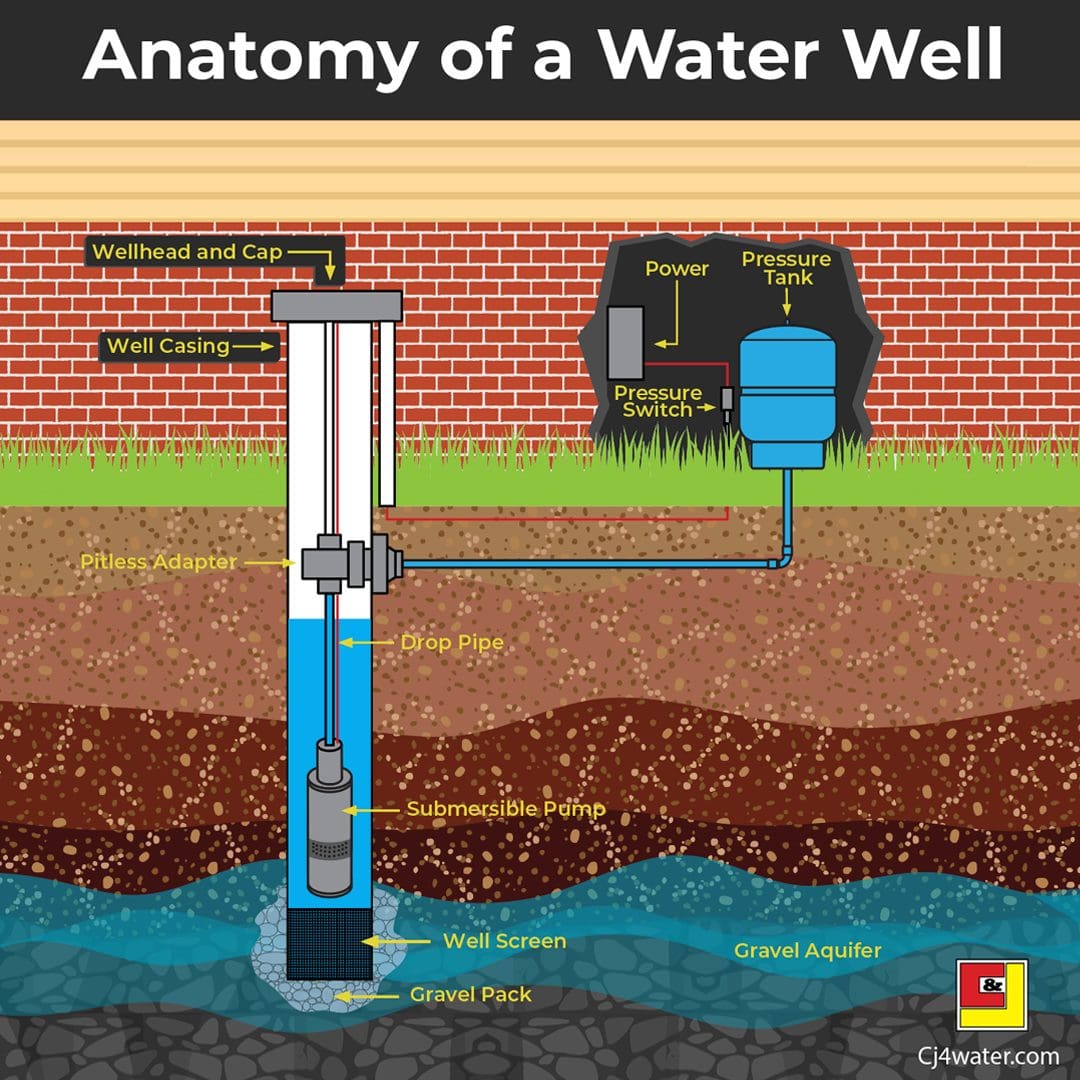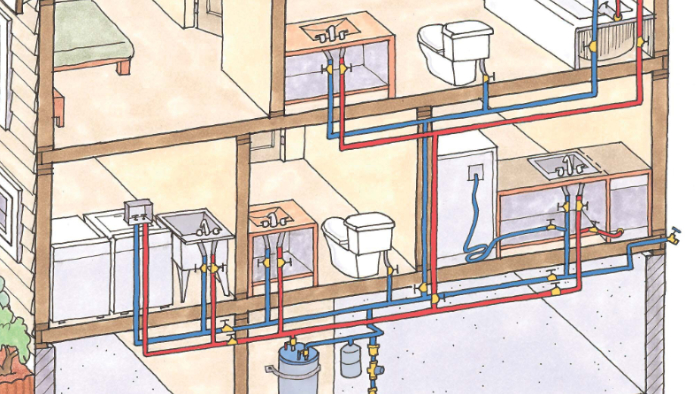Exploring The Structure of Your House's Plumbing System
Exploring The Structure of Your House's Plumbing System
Blog Article
Were you in search of help and advice on Anatomy of a House: Understanding the Components?

Comprehending just how your home's pipes system works is vital for every house owner. From delivering clean water for alcohol consumption, cooking, and bathing to securely eliminating wastewater, a properly maintained plumbing system is critical for your family's health and comfort. In this comprehensive guide, we'll explore the complex network that makes up your home's pipes and deal suggestions on maintenance, upgrades, and dealing with typical issues.
Intro
Your home's pipes system is greater than just a network of pipes; it's a complicated system that ensures you have access to clean water and effective wastewater removal. Knowing its elements and exactly how they collaborate can assist you stop pricey fixings and ensure everything runs smoothly.
Basic Components of a Plumbing System
Pipes and Tubes
At the heart of your pipes system are the pipes and tubing that carry water throughout your home. These can be made from different products such as copper, PVC, or PEX, each with its benefits in terms of resilience and cost-effectiveness.
Fixtures: Sinks, Toilets, Showers, and so on.
Fixtures like sinks, toilets, showers, and bath tubs are where water is utilized in your home. Understanding just how these components connect to the plumbing system aids in detecting issues and intending upgrades.
Valves and Shut-off Factors
Shutoffs manage the flow of water in your pipes system. Shut-off valves are essential during emergency situations or when you need to make repairs, permitting you to separate parts of the system without disrupting water flow to the entire residence.
Water System System
Main Water Line
The primary water line connects your home to the municipal water system or a private well. It's where water enters your home and is dispersed to different components.
Water Meter and Pressure Regulatory Authority
The water meter procedures your water usage, while a stress regulatory authority makes certain that water streams at a safe stress throughout your home's plumbing system, stopping damage to pipes and components.
Cold Water vs. Warm water Lines
Understanding the difference between cold water lines, which provide water directly from the major, and hot water lines, which carry warmed water from the water heater, aids in fixing and planning for upgrades.
Drain System
Drain Piping and Traps
Drain pipes bring wastewater far from sinks, showers, and bathrooms to the sewer or sewage-disposal tank. Traps stop sewage system gases from entering your home and likewise catch debris that can trigger obstructions.
Ventilation Pipelines
Ventilation pipelines allow air into the drain system, stopping suction that could slow down water drainage and cause traps to vacant. Proper air flow is essential for preserving the honesty of your plumbing system.
Relevance of Correct Drainage
Guaranteeing appropriate water drainage prevents back-ups and water damage. On a regular basis cleansing drains pipes and maintaining catches can protect against costly repair services and expand the life of your plumbing system.
Water Furnace
Sorts Of Water Heaters
Water heaters can be tankless or typical tank-style. Tankless heating systems heat water as needed, while containers store heated water for instant usage.
Updating Your Pipes System
Reasons for Upgrading
Upgrading to water-efficient components or changing old pipes can enhance water top quality, reduce water costs, and increase the value of your home.
Modern Plumbing Technologies and Their Benefits
Explore innovations like wise leakage detectors, water-saving commodes, and energy-efficient water heaters that can save money and minimize ecological influence.
Cost Considerations and ROI
Determine the in advance expenses versus lasting financial savings when taking into consideration plumbing upgrades. Numerous upgrades pay for themselves with minimized utility expenses and less repair work.
Exactly How Water Heaters Link to the Pipes System
Understanding just how water heaters connect to both the cold water supply and warm water circulation lines helps in diagnosing problems like inadequate warm water or leaks.
Maintenance Tips for Water Heaters
Frequently purging your hot water heater to eliminate sediment, checking the temperature settings, and examining for leaks can extend its life-span and boost energy effectiveness.
Typical Pipes Concerns
Leakages and Their Reasons
Leaks can happen due to maturing pipes, loose fittings, or high water pressure. Resolving leakages immediately stops water damages and mold growth.
Clogs and Blockages
Blockages in drains and toilets are often brought on by flushing non-flushable items or a build-up of grease and hair. Using drain displays and being mindful of what drops your drains pipes can stop blockages.
Signs of Pipes Troubles to Look For
Low tide stress, slow drains, foul odors, or abnormally high water expenses are signs of potential pipes issues that ought to be resolved quickly.
Pipes Maintenance Tips
Normal Assessments and Checks
Schedule yearly pipes evaluations to catch issues early. Seek indications of leaks, deterioration, or mineral accumulation in faucets and showerheads.
Do It Yourself Maintenance Tasks
Simple jobs like cleansing faucet aerators, looking for bathroom leaks making use of dye tablet computers, or insulating subjected pipelines in chilly environments can avoid significant pipes concerns.
When to Call an Expert Plumber
Know when a plumbing issue requires expert expertise. Trying complex repair services without proper understanding can bring about more damage and greater repair work prices.
Tips for Reducing Water Use
Simple routines like fixing leaks without delay, taking much shorter showers, and running complete tons of laundry and dishes can preserve water and lower your energy costs.
Eco-Friendly Plumbing Options
Take into consideration sustainable pipes products like bamboo for floor covering, which is durable and green, or recycled glass for counter tops.
Emergency situation Readiness
Steps to Take During a Plumbing Emergency situation
Know where your shut-off valves are located and just how to turn off the water supply in case of a burst pipeline or significant leak.
Significance of Having Emergency Calls Handy
Keep call details for local plumbings or emergency situation services conveniently available for quick reaction throughout a pipes dilemma.
Ecological Influence and Conservation
Water-Saving Fixtures and Home Appliances
Setting up low-flow taps, showerheads, and commodes can considerably reduce water usage without compromising efficiency.
Do It Yourself Emergency Situation Fixes (When Relevant).
Temporary fixes like utilizing air duct tape to patch a leaking pipe or putting a container under a leaking tap can decrease damages until a professional plumbing gets here.
Verdict.
Recognizing the makeup of your home's pipes system encourages you to keep it properly, conserving money and time on repair services. By complying with routine maintenance routines and staying informed about modern pipes modern technologies, you can guarantee your pipes system runs effectively for several years to find.
HOW YOUR PLUMBING SYSTEM WORKS
Which Pipes Do What?
Blue lines = fresh water supply entering the building Red lines = hot water supply entering the building Grey lines = pipes carrying waste away from the building and venting pipes carrying gases away from the building (through the roof) YOUR MAIN PLUMBING SYSTEMS
There are two main plumbing systems that support your home s basic plumbing needs one that brings clean water into your home, and one that sends dirty water away from your home. Connected to the toilet, bath, shower, and other faucets in your home, these two systems keep your water flowing in the right directions.
ACCESSING FRESH WATER
Fresh and clean water is brought into your home through the main water supply line . Filtered through one pipe, this water is pressured to flow into the various fixtures in your home at any given time.
This water can be sourced from a well located on your property, a pond or river (mostly cottages), or, as in most cases, from the city s municipal water treatment centre. However, it is important to note that water that is untreated, such as the water siphoned from ponds or rivers, may not be safe to drink. Personal water supplies always need to be treated for hardness and contaminants before consumed.
MUNICIPAL WATER SUPPLIES
Improve taste and odour Remove sediment Eliminate hardness Reduce chlorine COLD WATER SUPPLY VS. HOT WATER SUPPLY
Cold water flows into your home or building through the service line, which then distributes hot or cold water to your fixtures. This line is most commonly run through a central column that runs floor to floor. Hot water runs in short and straight pipes as the longer the pipeline, the more heat that will be lost in the transfer. Having shorter pipes also allows residents to access hot water more quickly.
WASTE WATER SYSTEM
Your wastewater system is divided into two parts pipes that send wastewater away from your home and venting pipes that send sewer gas away from your home. Sewage water travels through pipes that flush the water and waste towards local sewers that are operated and managed by your city or town. Most sewer systems rely on gravity to move the wastewater to where it needs to go.
The further away from your toilet or sink, the larger wastewater pipes become. This allows for waste to be disposed of from various parts of your home or business at once without pipe blockages. The angle and flow of these pipes are also essential for keeping your waste pipes clear of build up.
https://harrisplumbing.ca/how-your-home-plumbing-system-works/

Hopefully you liked our part on Anatomy of a House: Understanding the Components. Thanks a ton for finding the time to read through our blog. Kindly take the time to share this blog posting if you enjoyed reading it. Thanks for taking the time to read it.
Call Today Report this page